Today, Sunday the 11th of May 2014 was Walk For Life – A charity fun walk to raise money for Farleigh Hospice.
Today’s “Walk for Life” consisted of two walks – a 23km walk from Heybridge, Maldon to Chelmsford, or a shorter 10.5km walk from Paper Mill Lock to Chelmsford.
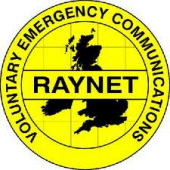 Running and staffing an event like this is an undertaking, with volunteers needed at multiple points right the way along the 23km route. Essex RAYNET had been asked to help out with the comms for this event. For those not familiar with the work that Essex RAYNET do at events like this, here’s a short report:
Running and staffing an event like this is an undertaking, with volunteers needed at multiple points right the way along the 23km route. Essex RAYNET had been asked to help out with the comms for this event. For those not familiar with the work that Essex RAYNET do at events like this, here’s a short report:
A lot of planning and organising goes into an operation like this. To be able to cover the entire route, a temporary 70cm repeater had been set up. A series of checkpoint had been set up along the way, co-located with the Farleigh teams. A team was deployed to the start of the event, with a control point established at the finish point.
Walk for Life
The start of the walk was at Heybridge Basin, and a tall mast was required to get a good signal into the repeater. Mark M6RKC’s mast was deployed to provide the comms from the starting point
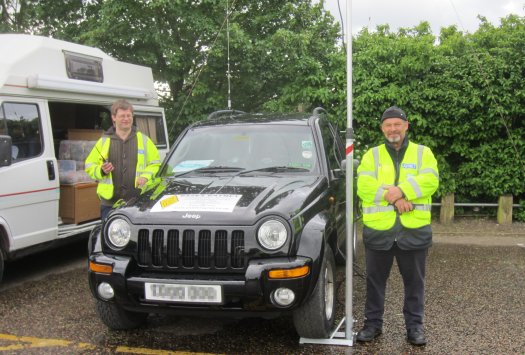
Five checkpoints were set up along the route at strategic locations – The RAYNET team had to be in position well ahead of the first walker, and there until the last walker had passed and Control issued the order for the checkpoint to close. Pictured here is the Sandford Lock checkpoint, manned by Gareth 2E0PSN, assisted for a time by Edwin G0LPO and Pete M0PSX. Gareth is lowering the 70cm mast after the order to stand down. The British Red Cross ambulance attended an incident at this checkpoint, in response to a request relayed by Essex RAYNET.
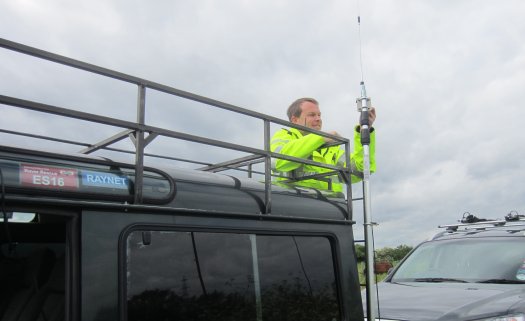
The finishing point was pretty active – with two walks terminating here, as well as refreshments and entertainment. The end-point was in the E2V Technologies Car Park on Waterhouse Lane in Chelmsford.
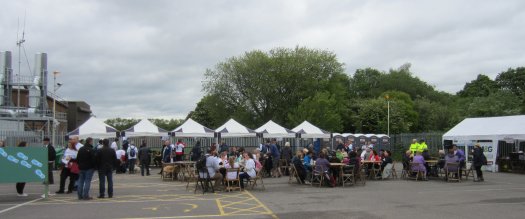
The end-point was the location of the RAYNET control team – responsible for monitoring the location and status of the checkpoints, relaying information to the organisers, and managing radio traffic from the 14-or-so RAYNET members deployed for the event. Key to this is accurate logging, frequent updates and having operators used to relaying information formally, quickly and accurately.
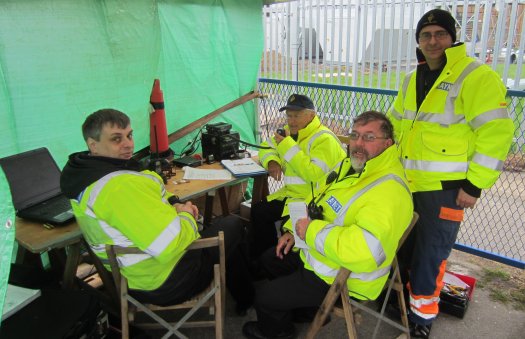
One lucky Essex RAYNET member, Roland M0BDB, had probably the most challenging job of the event – the Sweep Operator. It was his job to follow the last walkers back to the finishing point, and to signal the closedown of each checkpoint. Wearing a heavy-looking backpack containing supplies, radio and a first aid kit, his movements were tracked by Control using APRS transmitted on 2m, so that organisers could gauge the progress of the last participants.
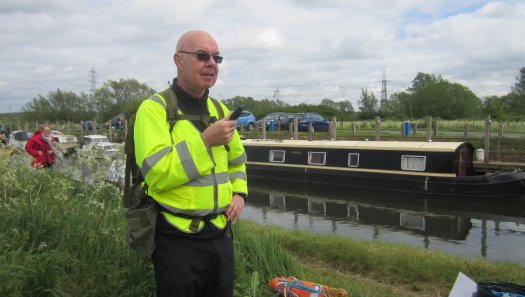
First experiences of RAYNET – Pete M0PSX:
“This was my first time in the field as part of the RAYNET team. Originally, I was along to learn more about the operation of an event like this, but after visiting the start and end points, I was deployed to the checkpoint close to Sandford Mill – a place I’m familiar with from the various amateur radio events organised at the museum. RAYNET comms is a little different to the standard amateur radio exchanges – everything goes through Control and although standard amateur callsigns are used, it’s about passing concise and accurate information. No “5 and 9, 73” on the RAYNET channels!
If you enjoy putting your radio knowledge to good use, and fancy some fresh air, RAYNET could be for you. Most of the operations simply require a 2m/70cm handheld and some free time. It’s rewarding being part of a team helping to ensure the smooth-running of an event like a charity walk, and gives you a sense of purpose you don’t get making a rubber-stamp QSO with an unknown European station on a club field event.”
If you’re interested in what RAYNET has to offer, take a look at their website to find out more, and for the list of upcoming events. You can also have a listen to our interview with RAYNET recorded a couple of months back.
|
Essex RAYNET Interview – March 2014 (7 mins, mp3 format) |

